



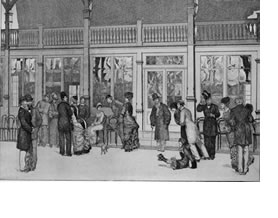
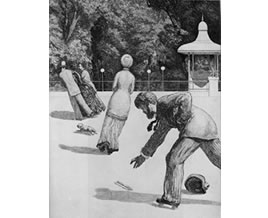
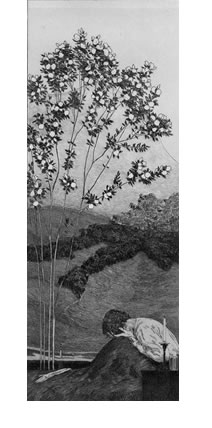
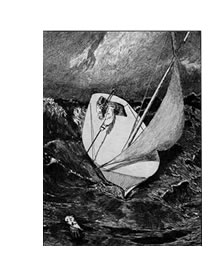
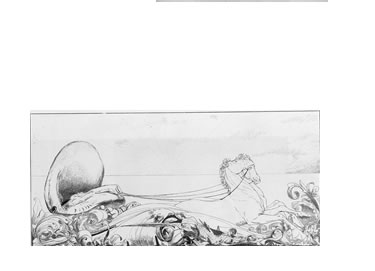

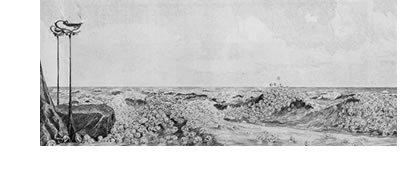
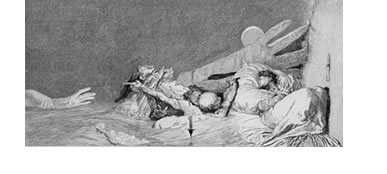
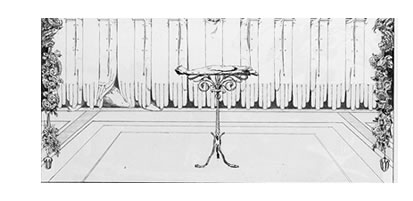
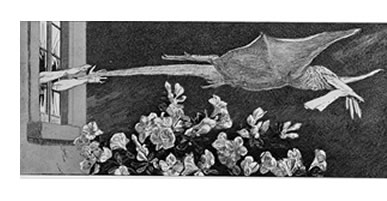
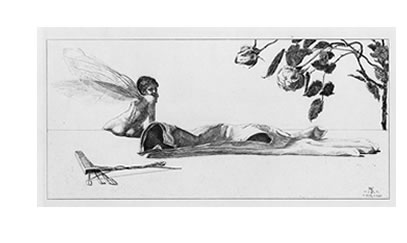
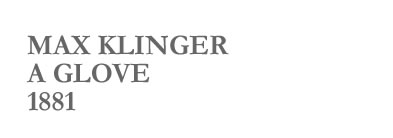

MAX KLINGER - A GLOVE 1881 a sequence of etchings
 |
 |
 |
 |
||||||||
 |
 |
 |
|||||||||
 |
 |
||||||||||
 |
|||||||||||
 |
 |
||||||||||
 |
 |
||||||||||
 |
 |
||||||||||
 |
|||||||||||
An Analysis of Sequence, Klinger's The History of a
Glove. Max Klinger, A Glove (Ein Handschuh) , 10 etchings, portfolio published 1881-1898 also known as "Paraphrase on the Finding of a Glove." Printed 1881 the images were composed much earlier (see Varnedoe, p.79).
And exhibition catalogue, Paradis Perdus, L'Europe
Symboliste, Musee de Beaux Arts, Montreal, 1995, published by
Flammarion, pp.342 - 3. • Place (11x13");
SECOND ROW • Rescue (9x7"); THIRD ROW FOURTH ROW LAST
used also in teaching
Dressed to Kill,
Another glove is used to construct a sinous weaving tale, of a woman trying to pick up a man in the art gallery. "Pick up turkey" reads her diary." Nuts" it says elsewhere.. The pictures on the wall reinforce possible readings, rather in the way that Hogarth constructs his sequences of prints. Above all this is hypnotic cinema - editing - imagery and sound. See also Jon Jost's All the Vermeers in New York as an example of Labyrinth, stalking and pictures on walls.
see
|